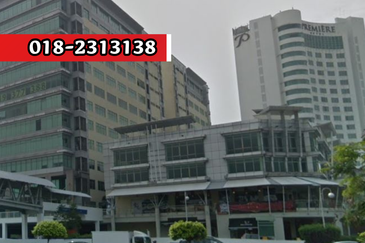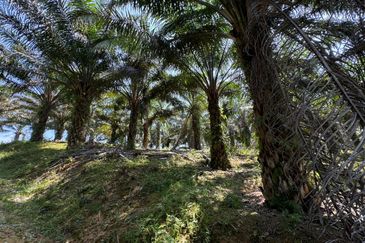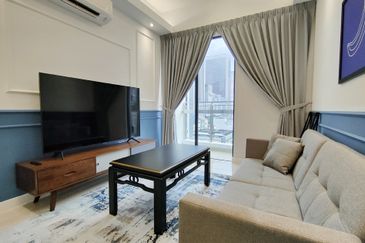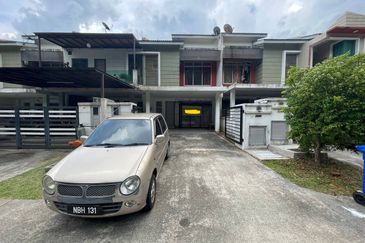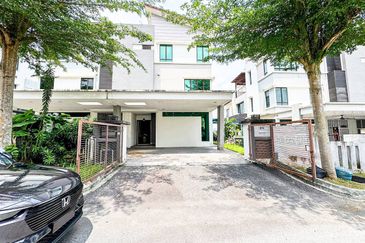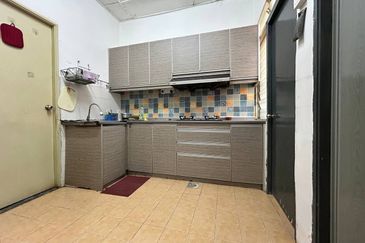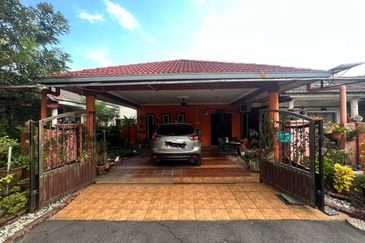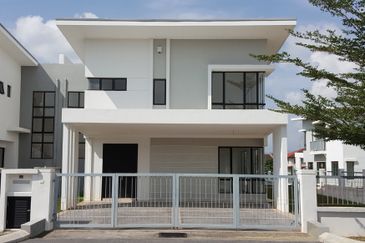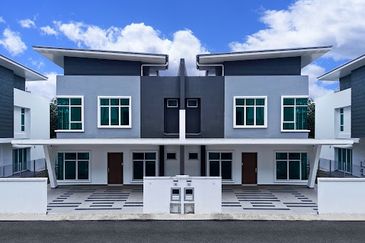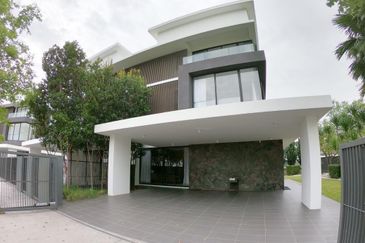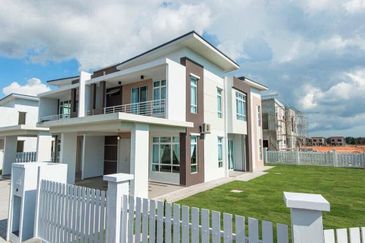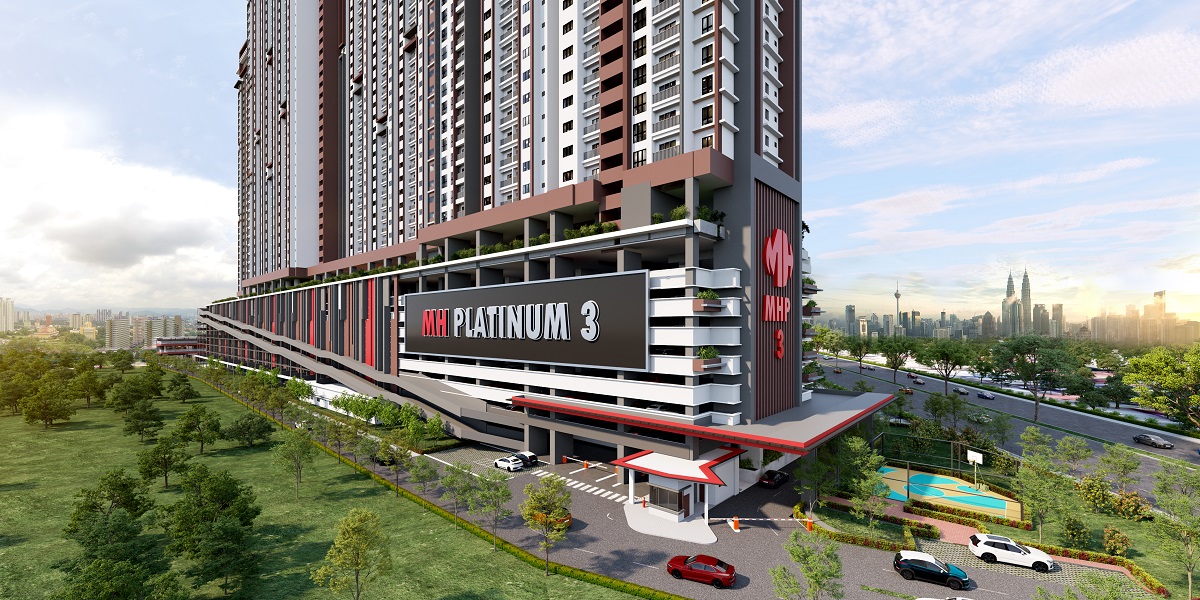We want to communicate the value of architecture to the public and the government. Architecture is about more than just buildings; we are working towards creating a local built environment that is world class, benefits society, is responsible to its surroundings and is aesthetically appealing. - Boon
Taking the helm of a respected organisation with a long history of 70-plus years can be challenging, daunting even, to some. But not to architect Boon Che Wee; he welcomes the challenge and is ready to take the bull by the horns.
Boon was elected the new president of the 2,495-member Malaysian Institute of Architects (PAM) this August, after serving two years as deputy president under immediate past president Lee Chor Wah. Saifuddin Ahmad has succeeded Boon as deputy president.
Boon, the director of GRA Architects Sdn Bhd, brings to his new role nearly 18 years of experience in the industry. He shares with City and Country his vision for PAM and local architecture.
“We want to communicate the value of architecture to the public and the government. Architecture is about more than just buildings; we are working towards creating a local built environment that is world class, benefits society, is responsible to its surroundings and is aesthetically appealing,” he says.
To do this, PAM plans to resubmit a proposal on a Malaysian architectural policy (MAP) to the government. The policy was first proposed in 1999 and since then, MAP has undergone some changes to fit the current environment. “It makes sense for the government, as the largest client of buildings in the country, to adopt a policy on good architecture,” says Boon.
MAP is aimed at achieving an orderly, sustainable and attractive environment that commensurates with the status of a fully developed society. It will provide a broad architectural framework, goals and guidelines for the protection of our natural environment and architectural heritage, and improving the quality of construction, maintenance and urban designs, among others.
PAM would also like to see the federal government set up a department of architecture or built environment, to advise the government on policies concerning the built environment.
Towards a new architectural environment
“The last 10 years have been quite hectic. It has been a decade of iconic architecture. We saw a lot of architects and developers seeking to build an emblematic building,” reflects Boon.
But the last petrol crisis and recent economic meltdown have prompted a state of introspection. “We are going through a soul-searching period in terms of how we develop and how we build. We are taking stock of the resources we utilise. It goes beyond buildings,” says Boon.
The new century has also brought to society’s attention the dire consequences of unchecked global warming. The focus on climate change is changing the way buildings are designed and built, prompting PAM to develop Malaysia’s own green building rating tool. The Green Building Index (GBI) was launched in May this year.
To Boon, who is serving as the director of Greenbuildingindex Sdn Bhd, the GBI is more than a rating tool. “There’s always argument about what is Malaysian tropical architecture. To me now, the answer lies in green buildings because by definition, green buildings consist of the local environment and climate and we utilise, to the best that we can, local resources. Invariably, this reflects our identity,” says Boon.
Now, the GBI team is taking its quest for a greener environment one step further — work has already begun on two new green rating tools, one for existing buildings and the other for townships. The first will focus on the improvement, maintenance and operation of existing buildings. It will take stock of existing buildings, especially in the urban areas, providing an opportunity to improve the performance of these buildings, to create more conducive and productive working environments and ultimately, to reduce operation costs.
The township rating tool will have a strong neighbourhood focus, says Boon. The tool will help the developers, consultants and local authorities take into account the full range of issues that must be considered in the planning stage, he adds.
Some of the earliest bio-climatic buildings in the region were designed by TR Hamzah and Yeang in the late 1980s and early 1990s. “At a time when green building ratings were unheard-of, they actually created energy-efficient buildings. In fact, Malaysian architects have won several Asean energy awards since the inception of the Asean Energy Centre in 2000.”
Things have come full circle, with Malaysian architects realising that energy-efficient buildings alone will not make a significant impact on carbon reduction; hence, the emphasis on green buildings. The professionals in the industry are hungry for knowledge on the design of green buildings, says Boon. GBI courses have seen good response, with each drawing a 100-odd participants.
“Aside from architects, we have electrical, mechanical and structural engineers, developers, environmental and green building consultants, product suppliers and manufacturers taking our courses. It has been overwhelming and I applaud all the participants. It’s not easy for professionals who had left school 30 or more years ago to sit through a three-day, eight-hour intensive course. Since its launch, we have had over 40 pilot green building projects seeking GBI rating and we recently received a few requests for clarification from the government following our proposal for incentives for corporations that wish to pursue a GBI rating. We see the requests from the government as a good sign,” says Boon.
Demand for green building knowledge is also growing outside the Klang Valley, particularly in Sabah and Sarawak, and Penang. Boon believes the GBI will play a big role in advancing Malaysian architecture towards green buildings and ultimately creating a name for Malaysian architecture.
Cultivating talents of Malaysian architects
Asked about the lack of well-known local architects, Boon attributes it to a lack of opportunities. He says Malaysia has talented architects, some of whom have worked with famous foreign architects, but they do not get the recognition they deserve.
PAM has continuously encouraged the government and corporations to hold competitions for their projects, especially for significant buildings. This will help elevate and showcase the works of local architects. “I feel competitions will give our younger and emerging architects a goal and an opportunity. Let them show the world what they can do. It will also help in terms of gaining experience; they could partner the bigger firms on the projects and learn from more experienced architects. We have a lot of design talent; it is the opportunities that we do not have.”
Local architects also lack publicity. However, PAM has formulated a plan to address this issue. “We are going to cover as many emerging architects as possible and we are looking for those who have done good work to help push them forward. We will get them interviewed by the media and compile and collect their work for exhibitions. We want to encourage them and cultivate that talent and bring them into the eye of the public and the world,” says Boon.
Immediate issues
At the top of Boon’s to-do list in his new role as president is to address the hiccups in the implementation of the local authority’s one-stop centres and in the submission procedures for the certificate of compliance and completion. These initiatives were announced in 2007 to boost the country’s property industry by cutting down red tape in the local governments and speeding up approvals for development projects.
Implementation has been far from perfect, says Boon. “It is still taking up a lot of time. The problem is, the different local authorities have different interpretations of the guidelines. They cannot seem to agree on what is actually required. Certain councils are very efficient; they are able to process and approve a project in two or three months. Some, however, take up to 12 months to approve even a small project. We hope to work this out with the government very soon but we are realistic. We know it is not something that will change overnight.”
Another matter of concern for PAM is the public perception that architects are to be blamed when things go wrong with a project. “We have alwasy been an easy target for anything that happens, from a building’s collapse to abandoned housing projects. This is a misguided notion and it is our duty to continuously clarify it to the public. We have to defend our role in the industry, our service to the people and contribution to society.”
PAM is planning a professional practice symposium with other institutes to inform the professionals, the media and the public on the roles of architects and engineers in public projects. From this symposium, PAM hopes to formulate a proposal for a comprehensive and properly defined role for professional architects and engineers in the implementation of projects.
In parting, Boon says: “I am confident that architects will lead the building and construction industry in responsible and sustainable development as the industry is now more open to architectural possibilities and solutions. As a developing nation, we need to continue to build but more responsibly from now on.”
This article appeared in City & Country, the property pullout of The Edge Malaysia, Issue 775, Oct 5-11, 2009.
TOP PICKS BY EDGEPROP
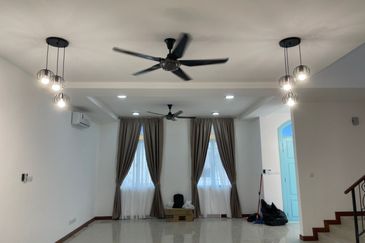
Peranakan Straits, Setia Eco Templer
Rawang, Selangor
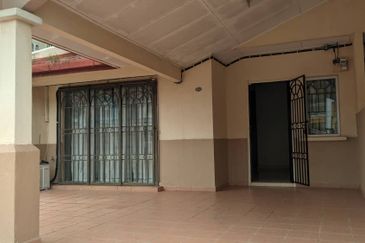
Pusat Bandar Putra Permai
Seri Kembangan, Selangor


